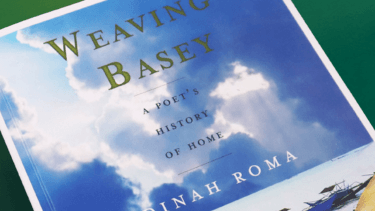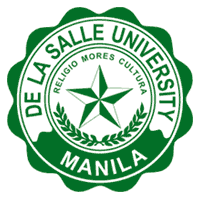How can history and memory rebuild a home ravaged by a typhoon?

Sponsored by

Sponsored by

Award-winning poet, University Fellow, and Literature Professor Dr. Dinah Roma has released her first collection of essays, Weaving Basey: A Poet’s History of Home (KATIG Writers Network, Inc., 2024). Conceived following the profound devastation of her hometown by typhoon Yolanda in 2013, the book is a partly personal, partly historical journey toward healing and finding home. Her initial manuscript was selected as one of only three proposals from among 69 entries that received a trust fund grant from the National Book Development Board (NBDB) in 2015. QUESTIONS magazine asks her about her experiences writing the book.
Please give a short background of how this book came about. Why did you embark on this project?
I always trace the origins of Weaving Basey back to November 8, 2013, the day typhoon Yolanda devastated Eastern Visayas. A few days later, I contracted dengue and was hospitalized for it. While impatiently enduring the IV drips, I passed the time watching television. It was there that I saw survivors of Yolanda sharing their heart-wrenching stories in Waray, my mother tongue. During this time, a friend sent me a New York Times article about Basey, where approximately 300 bodies were discovered scattered throughout the coastal town.
Many survivors had sought refuge in the colonial church of St. Michael the Archangel Parish. This news forged a profound connection with my hometown, stronger than ever before. It marked the beginning of my journey to learn more about Basey, driven by the fear that I might not have another opportunity should another calamity strike. In 2015, the National Book Development Board offered a writing grant under its Local History and Culture category. Seizing this opportunity, I knew I could finally embark on fulfilling this journey.
Can you tell us about the experience of the personal and the historical coming together in this story of homecoming?
In Weaving Basey, personal and historical narratives are closely interwoven as I delve into my roots in a town shaped by its historical and cultural heritage, natural resources, and the catastrophic forces of nature. My return to Basey, prompted by the damage of typhoon Yolanda, transcended a mere physical journey—it was an emotional and historical pilgrimage.
As I dug into the town’s past and unearthed stories of my family within it, I realized how intricately personal identities are enmeshed in our collective histories. This homecoming embodies a narrative of reconnection and an endeavor to shape one’s geography, where fragments of personal memory and communal history coalesce into a landscape marked by both resilience and vulnerability.
How would you describe reconciling the memory of “there’s nothing there” to finding “the gift it truly is” in reference to Basey?
Reconciling the memory of “there’s nothing there” with the realization of “the gift it truly is” marked a transformative shift in perception during my return to Basey. Initially, my sparse childhood memories depicted Basey as a place of little significance. Whenever I mentioned my intention to visit Basey after a long absence, my mother would respond with skepticism and would caution, “There’s nothing there,” or in our mother tongue, “Waray gad maski ano didto.”
Yet, as I immersed myself in Basey’s post-Yolanda landscape and studied its rich history, I began to recognize the depth of its cultural fabric and the strength of its community. By locating its role in historical events like the 16th-century Moro slave trades, the Pulahanes uprisings, and the Balangiga Massacre, I realized how these events are intertwined into the broader narrative of the Philippines, linked to Yolanda’s historic landfall in Eastern Visayas. Despite the catastrophic events it has endured, Basey stands resilient. This journey profoundly transformed my understanding, converting perceived emptiness into a deep appreciation for Basey’s resilience and beauty. I’ve learned that often, the true value of a place is revealed through its trials and our renewed engagement with it.
During the launch, you made mention of the historian Joseph Amato and his concept of home shaping history. Can you explain this in relation to your work?
In my work, I draw upon historian and scholar Joseph A. Amato’s concept that ‘home shapes history’ to examine how the physical and emotional landscape of Basey has influenced its historical narrative. Amato’s idea underscores the belief that personal and communal histories scaffold the geographical and cultural settings of our homes. In Weaving Basey, I examine how the town’s unique characteristics—its natural environment, traditional crafts, and community resilience—have not only shaped the experiences of its residents but have also been molded by historical events like typhoon Yolanda. This interplay highlights how places can influence personal and collective identities, anchoring historical understanding in the physical and metaphorical space of home.
How has the spirit of the poet driven this narrative of home?
The spirit of the poet in this narrative has been pivotal, not only in documenting the story of Basey but in charting an inner map where Basey serves as a key landmark in my poetic imagination. This approach allows me to explore the coastal town’s landscape as both a physical and metaphoric space, revealing layers of meaning that transcend the visible.
As a poet, I realize that Basey has long inhabited my earlier poems to probe the deeper currents of memory and identity, portraying the town not just in terms of its historical facts but as a canvas for emotional and existential exploration. The narrative weaves through these personal and collective dimensions, illustrating how our sense of home shapes and is shaped by our inner lives. In this way, Basey becomes more than a place—it becomes a part of the internal compass that guides my poetic expression, allowing me to navigate through the complex terrains of heritage and personal history.
Can you share some memorable moment/s in the writing of this book?
One of the most memorable aspects of writing this book was the opportunity to physically immerse myself in Basey again. With ample time, I immersed myself in the town’s life, connecting with its history and people in a way that enriched my writing. Particularly poignant was the warm reception from older residents who fondly remembered my father, the town’s former municipal treasurer back in the late 1960s. Their personal anecdotes provided a touching link to Basey’s communal history.
Interviewing Yolanda survivors was profoundly impactful. Hearing their stories of resilience and courage in the face of devastating adversity provided valuable material and significantly influenced my views on human strength and community spirit. These experiences were foundational, transforming my understanding of my hometown and enriching the narrative of Weaving Basey.
Contact: Dr. Dinah Roma | dinah.roma@dlsu.edu.ph